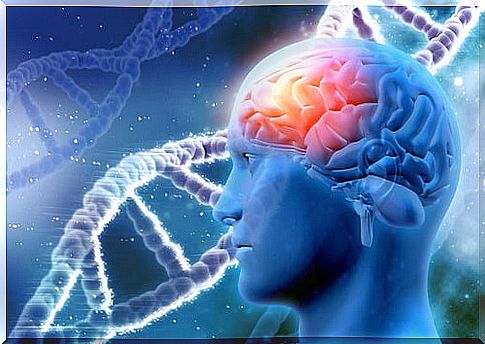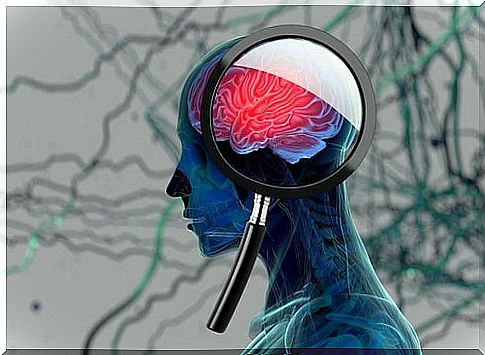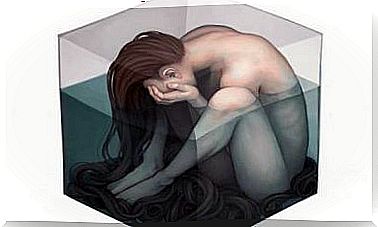Brain Infections, Classification And Symptoms

When we think of infections, we usually don’t think of brain infections. It is easy to imagine an infection in any part of the body, but not in the recesses of our brain. Infection understood as the invasion and proliferation of pathogens is also present in the nervous system.
An infection occurs when the body is invaded by a disease-producing microorganism. The main infectious agents are viruses, bacteria, fungi, and parasites. Brain infections are usually caused by an external source, such as the ears, nose or throat (among others).

Types of brain infections
Depending on the affected area, the infection can be meningitis (meninges) or encephalitis (rest of the brain). Meningeal infections cause confusion, fever, nausea, stiff neck, headache, and photophobia.
In turn, encephalitis produces the same symptoms as meningitis and many others that depend on the affected nerve area. Finally, infections can be classified into: viral, bacterial, fungal and parasitic.
Viral infections
Neurotropic viruses have a special affinity for the nervous system, like the viruses that cause rabies and polio. The susceptibility of the nervous system to the virus will depend on the presence of specific receptors on the membrane.
A virus is an aggregate encapsulated in nucleic acid. Depending on where you stay, they can lead to encephalitis or meningitis.
Bacterial infections
Perhaps one of the most aggressive brain infections. Bacteria are single-cell microorganisms that mainly cause meningitis. This disease can lead to brain abscesses which produce pus and the death of cells in the affected region.
Fungal infections
Fungal infections are caused by a fungus that enters the nervous system. Usually, our nervous system is protected against these threats, but the cessation of these defenses by a disease can clear the way for these infections.
Parasitic infections
Parasites are organisms that live at the expense of another (host). They can derive from infection elsewhere in the body and are generally associated with symptoms of fever, malaise, and hypotension. Clear examples can be malaria, amoebae and cysticercus.
Diagnosis
As we already mentioned, most infections of the nervous system are secondary to infections of other parts of the body. The most common symptoms at a general level are :
- Headache
- Fever.
- Vertigo.
- Sickness.
- Seizures
On the other hand, at a neuropsychological level, symptoms vary according to the type of infection and the area of the nervous system affected. The following neuropsychological symptoms can generally be identified :
- Acute confusional syndrome.
- Temporo-spatial disorientation.
- Attentional defects.
- Memory failures.
- Motor agitation
Detection mechanisms used
Early diagnosis is vital as symptoms can escalate to brain damage in a very short time. The doctor usually performs an exploratory study based on the patient’s history and recent activity. More specific methods will be used later :
- Neurological examination. Tests designed to assess sensory and motor functions. Hearing, speech, and coordination or balance (among others) are tested. Reflex and strength tests are also essential to determine the source of symptoms.
- Laboratory analysis. Urine and blood tests are usually the most used for their effectiveness in detecting foreign antibodies or proteins. In a normal situation these components should not be present, their appearance is a reaction of the body to an infectious invasion.
- Cerebrospinal fluid analysis. This fluid that surrounds and protects both the brain and the spinal cord is useful for detecting infections, chronic inflammations and other diseases in general.
- Neuroimaging techniques. These techniques are helpful in detecting signs of inflammation and bleeding in the brain. Examples are computed tomography, magnetic resonance imaging, and electroencephalogram.
Treatment of brain infections
Like the diagnosis, the treatment will depend on the affected area. These diseases are difficult to treat and in most cases irreversible. Symptoms are generally allowed to elapse and standardized protocols are applied depending on the type of infection.
For example, when the infection is bacterial, appropriate antibiotics are applied to alleviate symptoms and try to reverse the disease.

The most common infections
Among the most common nervous system infections we can highlight two: meningitis and encephalitis. These are characterized by an inflammation of the brain or spinal cord, producing fever, headache, seizures and in many cases death.
- Meningitis. The meninges are the membranes of bone tissue that surround the brain and spinal cord. Often the infection starts bacterially or virally. Haemophilus meningitis is the most common and mainly affects young children. Thanks to the implementation of the vaccine against this disease in the first years of life, the fatal risk has decreased substantially.
- Encephalitis. Encephalitis consists solely of inflammation of the brain, mainly due to bacterial or viral causes. Encephalitis can be primary, caused by a direct viral infection. In turn, it can also be secondary, due to previous complications. Finally, it is called focal when the affected area is specific and diffuse when it affects several areas.
Conclusions: current status of infections
Given the incidence of nervous system infections in the general population, research has focused on their prevention. This prevention is mainly carried out at the level of vaccines and rapid and effective action protocols.
Current research is focused on achieving a faster and more specialized intervention for each type of infection. The most sensible recommendation is to consult a specialist each time symptoms appear in order to rule out a possible infection.









